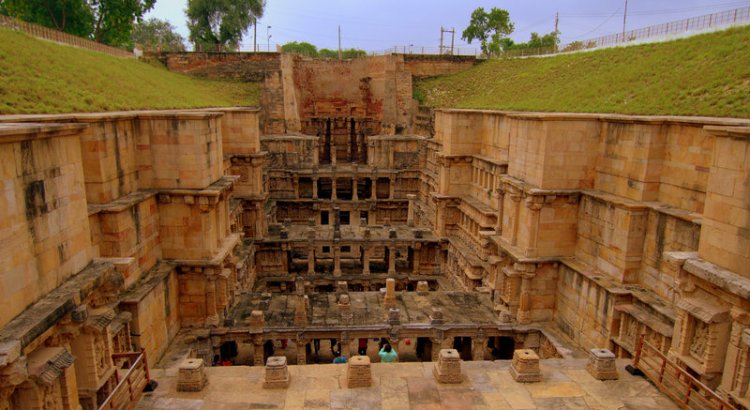Patan Rani ki vav Gujarat

Address
Patan Rani ki vav Mohan Nagar Society, Patan, Gujarat 384265
Deity
Shiva, Vishnu, Brahma
Introduction
- Location: Rani ki Vav (also known as Ranki Vav) is a renowned stepwell temple located in Patan, Gujarat, India, on the banks of the Saraswati River.
- Historical Context: It was commissioned by Udayamati, daughter of Khengara of Saurashtra and queen of the 11th-century Chaulukya king Bhima I.
- UNESCO World Heritage Site: Recognized for its architectural and historical significance, Rani ki Vav was listed as a UNESCO World Heritage Site in 2014.
- Architectural Style: The stepwell is designed as an inverted temple, symbolizing the sanctity of water, and features seven levels of stairs adorned with intricate sculptural panels. It boasts more than 500 principal sculptures of Bhagwan Vishnu and over 1,000 minor sculptures, blending religious and legendary imagery.
Puranic Significance
- Construction Era: Built during the rule of the Chaulukya dynasty, construction of Rani ki Vav began in 1063 and took around 20 years to complete, with debates surrounding the exact date and circumstances of its commissioning.
- Historical Context: It is believed that Udayamati commissioned the stepwell in memory of her husband Bhima I (r. c. 1022 – 1064). Some sources suggest the construction may have been initiated before his death.
- Silt and Rediscovery: The stepwell was later submerged by the Saraswati River and became silted over. In the 1890s, archaeologists Henry Cousens and James Burgess discovered it when only the well shaft and a few pillars were visible.
- Cultural and Spiritual Significance: The stepwell serves as an underground shrine or inverted temple, reflecting the sanctity of water. It features a rich array of sculptures depicting numerous deities, with a strong emphasis on Vishnu:
- Notable Sculptures: Include Sheshashayi Vishnu (reclining on the serpent Shesha), Vishwarupa Vishnu (cosmic form), Dashavatara (ten incarnations), and representations of Brahma, Shiva, goddesses like Devi, Ganesha, Lakshmi, and Durga, among others.
- Diversity of Deities: The sculptures also include Ardhanarishwara and various goddesses such as Saraswati, Chamunda, and the Saptamatrikas, along with images of the Navagraha (nine planets).
Special Features
- Architectural Mastery: Rani ki Vav is recognized as one of the finest examples of stepwell architecture in Gujarat, showcasing the Maru-Gurjara architectural style. Its construction reflects the height of craftsmanship in stepwell design.
- Dimensions: The stepwell measures approximately 65 meters (213 ft) long, 20 meters (66 ft) wide, and 28 meters (92 ft) deep. The fourth level is the deepest, leading to a rectangular tank that measures 9.5 meters (31 ft) by 9.4 meters (31 ft) and is 23 meters (75 ft) deep.
- Structural Design:
- The entrance faces east, while the well is situated at the western end, consisting of a shaft 10 meters (33 ft) in diameter and 30 meters (98 ft) deep.
- The stepwell is organized into seven levels, featuring a stepped corridor compartmentalized at regular intervals with pillared multi-story pavilions.
- The walls, pillars, columns, brackets, and beams are richly adorned with intricate carvings and scroll work, with niches embellished with delicate sculptures.
- Pillars: There are a total of 212 pillars in the stepwell temple, each showcasing elaborate craftsmanship.
Century/Period/Age
11th-century
Managed By
UNESCO World Heritage Centre& Archaeological Survey of India
Nearest Bus Station
Patna
Nearest Railway Station
Patna Station
Nearest Airport
Ahmedabad




